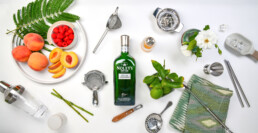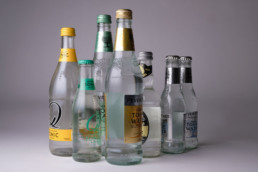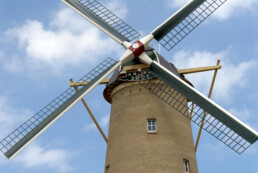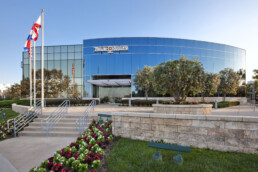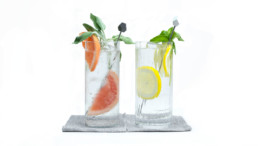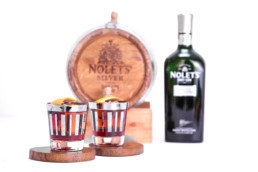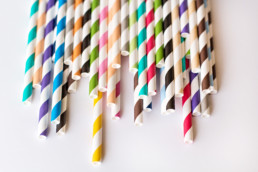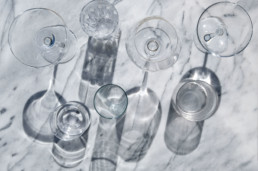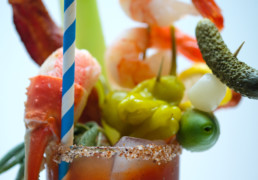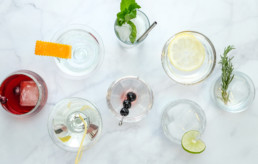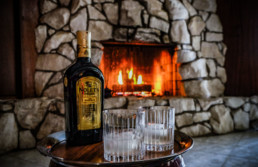Uncategorized
Discover Our Unique Botanicals
With its extraordinary botanical blend, NOLET’S Silver redefines modern sophistication with a truly extraordinary spirit. At the heart of this unique spirit are three real botanicals: Rose, Peach, and Raspberry. Rose (Rosa Damascena) adds a light, refined air to NOLET’S Silver Gin. Its presence is not overpowering, but instead delicately caresses the senses, infusing the spirit with a floral elegance that is both enchanting and refreshing.
Rose (Rosa Damascena) adds a light, refined air to NOLET’S Silver Gin. Its presence is not overpowering, but instead delicately caresses the senses, infusing the spirit with a floral elegance that is both enchanting and refreshing.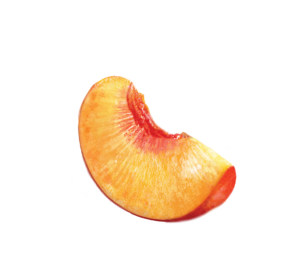 Peach (Prunus Persica), lends a fresh, sweet flavor to NOLET’S Silver Gin. The essence of perfectly ripe peaches are captured and distilled, resulting in a subtle yet delightful fruity undertone.
Peach (Prunus Persica), lends a fresh, sweet flavor to NOLET’S Silver Gin. The essence of perfectly ripe peaches are captured and distilled, resulting in a subtle yet delightful fruity undertone.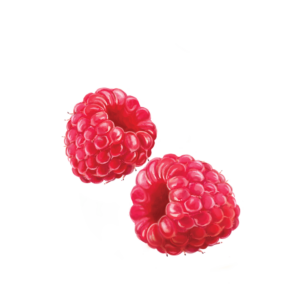 Raspberry (Rubus Ideaus) introduces a robust, slightly tart flavor that balances the floral and fruity notes. It adds depth and complexity to NOLET’S Silver Gin, making every sip an intriguing journey of taste.
Raspberry (Rubus Ideaus) introduces a robust, slightly tart flavor that balances the floral and fruity notes. It adds depth and complexity to NOLET’S Silver Gin, making every sip an intriguing journey of taste.
Juniper berries, a fundamental requirement for gin, are also a part of NOLET’S Silver Gin’s botanical blend. Beyond these, a secret botanical base recipe is used that invites discerning drinkers to embark on a journey of taste and discovery. These botanicals all undergo an exacting process to extract their essence. Fruits, flowers, spices, and herbs are individually macerated and then distilled, resulting in an perfectly balanced blend of flavors and aromas.
What truly sets NOLET’S Silver Gin apart is its versatility. It’s a cocktailing gin that offers a canvas for mixologists and enthusiasts to craft their own unique creations. Whether it’s a classic Gin + Tonic that blooms with the floral rose notes or a Silver Martini served up with a twist, NOLET’S Silver Gin adds a fresh and pleasantly surprising twist to cocktail recipes.
NOLET’S Silver Gin is a celebration of the botanical craft, an invitation to savor the unique and embrace the unexpected.
Gin Up The Tonic
Winston Churchill once declared that “The gin and tonic has saved more Englishmen’s lives, and minds, than all the doctors in the Empire.” Served in a highball or a “Copa Balon” the Gin and Tonic, is an essential cocktail with worldwide popularity. The unique flavor profile created by gin in combination with tonic is a scientific phenomenon. New magnificent modern gins, tonics, and garnishing variants reinvigorate and reimagine the Gin & Tonic with endless possibilities. So, what’s so special about tonic?
First concocted in the 1700s by a Scottish physician named George Cleghorn who specialized in fevers and malaria, tonic water containing quinine from cinchona trees helped in the treatment and prevention of disease. He found that the indigenous people of (what is now) Peru used the cinchona bark to treat fevers.
These aggregates create a taste sensation that is completely different from just gin and tonic on their own. This is why a gin and tonic doesn’t taste exactly like gin plus tonic.
Matthew Hartings
As Jared Diamond states in his book, Guns, Germs, and Steel, “Malaria, yellow fever, and other diseases of tropical Africa, India, Southeast Asia, and New Guinea furnished the most important obstacle to European colonization of those tropical areas.” Thus, quinine (and subsequently tonic) was used by the British East India Company to provide protection and treat against mosquito-borne ailments. The quinine was bitter, and British officers were reluctant to take their daily ration until it was brilliantly combined with a little sugar, lime, and gin. From that discovery on, the “Indian tonic” was perceived delicious.
In fact, scientifically, the molecules of gin and those of tonic are similar in structure and have a natural attraction, creating a bond that generates synergy in the smell and taste receptors. “These aggregates create a taste sensation that is completely different from just gin and tonic on their own. This is why a gin and tonic doesn’t taste exactly like gin plus tonic,” according to Matthew Hartings, Associate Professor, Department of Chemistry, American University.
The options for tonic water currently on the market are extensive. When pairing tonic with gin, several factors come into play in creating the perfect balance. To judge new artisanal tonics, compare the ingredients to gauge the quality and pairing options with the intended gin and garnish. Consider the sweetening agent used; cane sugar and agave tend to be the most appealing and avoid those sweetened with high fructose corn sweetener. There are flavors and botanicals built into the tonic like lemon, elderflower, orange, yuzu, rhubarb and so on that are fun to experiment with and can punctuate the botanicals of the gin quite nicely. Trial and error will land the right tonic for the style of gin and garnish it’ll compliment. After all, it’s a matter of personal taste and preference.
The gin and tonic’s historical significance is as multi-dimensional as the flavor profile that the cocktail formulates. Inexplicably harmonious to the palate both viscerally and scientifically, gin made the bitter medicinal quinine in tonic palatable and arguably incredible.
NOLET'S Commitment To Sustainability
We believe in the importance of sustainability to help the planet by minimizing our footprint, working on green initiatives, and investing in charities that support these goals.
In Schiedam, Holland the Nolet Family Distillery is partially powered by a 141-foot tall wind turbine built in 2005. This green electric power symbolizes the Nolet family’s commitment to reducing the company’s footprint and is home to a hospitality lounge and cinema while reflecting Dutch heritage. Other energy-saving measures include an underground thermal storage system to heat and cool the distillery.
In 2007, the 85-meter tunnel that runs between the distillery and logistics center was nominated for the first Dutch Building Prize and won the Schreuders Prize for underground construction. The tunnel is the longest private tunnel in the Netherlands, and it minimizes traffic in the transport of raw materials and packaged products to be distributed throughout the world.
In the US, the Nolet Spirits office in Aliso Viejo, CA is powered by 360 solar panels that provide 75% of the energy needs. The system offsets 18,000 gallons of gas or avoids 122 tons of emissions. In addition, we transitioned to LED lighting and have drought-tolerant landscaping.
Our efforts don’t end there. Nolet Distillery has an ambitious sustainability plan for 2030 aiming to reduce waste, use 10% less electricity per liter produced in 2020, use 10% less glass and cardboard compared to 2020, and to limit the use of natural gas in the future.
Gin + Soda, Simplicity Defined
There are countless quotes, cliches, and proverbs about the power of simplicity, from Confucius, "life is really simple, but we insist on making it complicated" to Leonardo da Vinci, "simplicity is the ultimate sophistication." The acronym, KISS (keep it simple, stupid) may not be top of mind while concocting a cocktail, but consider it.
Gin + Soda, for instance, is a no-recipe cocktail consisting of gin plus soda, with an optional garnish over ice. In making a case for the sublime simplicity of gin + soda, it's paramount to consider the inherent complexity of today’s modern gins. Fundamentally gin has a complicated flavor profile, distinguished first and foremost with juniper, which provides the herbal "pine" flavor. From there, the distilled botanicals are a varied combination of herbs, fruits, and spices as unique as the bottles that contain them.
Look to the botanicals when choosing a gin. Modern gins push the boundaries of the traditional juniper-forward spirits, welcoming fruits, florals, and herbs to dominate the flavor profile. NOLET'S Silver, crafted with real botanicals, features roses, peaches, and raspberries that bloom in combination with the effervescence of soda. The combination is a wonderful way to enjoy the fruit and floral notes without impairing the botanical gin with sugars or other bold flavors. This serve provides a refreshing way to feature a fantastic gin without camouflaging the flavor.
In making a case for the Gin + Soda, it would be remiss in not noting the low-calorie, low-carbohydrate aspect. Many mixed drinks that rely on fruit juices, liqueurs, or sweet mixers can have high sugar content. At 117 calories per serving (approximately 1.5 oz.), NOLET'S Silver Gin is a lower calorie spirit option. Gin + Soda can be elevated with seasonal garnishes and flavored bitters to create beautifully simple cocktails that are as delightful to look at as they taste.
So, let the botanicals in your gin shine through! Try a squeeze of lime, a sprig of mint, a slice of fruit or experiment with any other seasonal herbs, spices, fruits and vegetables that complement the botanicals within.
Barrel Aged
The process of aging a high-octane cocktail in a flavorful oak barrel imparts a complex and cohesive element, along with a woody undertone. As the alcohol interacts with the wood, something scientific (and magical) happens, flavorful compounds emerge in tannins and vanillins that mature as they age. The result is a pre-mixed cocktail with unique depth, perfect for a bar/restaurant or a home bartender. Memorable for a party or event, the process is not too complicated for the return on investment.
The quality and alcohol content of the cocktail to be barrel aged must be high, and the output will be exceptional, imparting a mild oak flavor that mellows the alcohol and acidity. Spirits that are pot distilled have a unique character that is naturally enhanced by aging in an oak barrel. Barrels come in various sizes and can last for multiple uses if cared for properly.
So, get a barrel and follow the directions below.
BARREL PREP
To prepare a new barrel for aging, there are a few things you’ll need to do. The barrel will be sanitary because the wood was heated to bend the staves into place. Fill the barrel with water to cause the wood swell and eliminate possible leaks (this could take several hours or a couple of days). If leaking persists, beeswax on the outside of the dry barrel will seal cracks. (Never put beeswax on the inside of the barrel, as it will contaminate the liquor on the inside).
After the swelling occurs, simply rinse the barrel of any sawdust. At this stage, measure the amount of liquid it holds to maximize the amount of product that fits inside for proportions.
The cocktail you choose to make should be sweetened only with liqueur. Sweetening agents (sugar, simple syrup, molasses or honey) or fresh ingredients (such as citrus juice) will oxidize or ferment, which would ruin the whole batch. Use bitters sparingly so that they don’t overpower the cocktail inside the barrel.
Combine the spirits.
Store the barrel in a dark, cool place. You’ll want to try a sip every few days. New barrels will take less time to age the contents. Once the cocktail has rested and tastes ready, strain into a clean glass container for storage. The barrel will then need to be thoroughly cleaned and rinsed with a Citric Acid wash (dissolve two teaspoons of citric acid in five gallons of water, swish mixture around for 5-10 minutes, flush thoroughly and refill). After using, the barrel should be stored filled with liquid, if not aging liquor, water that is replaced every two weeks.
RECIPES
NOLET’S Silver Barrel Aged Negroni
1 part NOLET’S Silver Gin
1 part Sweet Vermouth
1 part Aperol
Batch ingredients together and pour into a drained, clean barrel. Allow resting for 2-3 weeks. Strain into a clean glass container to store.
Cocktail Prep: Pour 3 oz. into a mixing glass with ice. Stir then strain into a Coupe or double Old-Fashioned glass. Garnish with an orange twist.
NOLET’S Silver Barrel Aged Martinez
2 parts NOLET’S Silver Gin
2 parts Sweet Vermouth
1 part Maraschino Liqueur
¼ part Angostura Bitters
Batch ingredients together and pour into drained, clean barrel. Allow resting for approximately 2-3 weeks (tasting every several days).
Cocktail Prep: Pour 3 oz. into a mixing glass with ice. Stir then strain into a Coupe glass. Garnish with an orange twist.
NOLET’S Silver Barrel Aged Manhattan
2 parts NOLET’S Silver Gin
2 parts Sweet Vermouth
¼ part Orange Bitters
Batch ingredients together and pour into drained, clean barrel. Allow resting for approximately 2-3 weeks (tasting every several days).
Cocktail Prep: Pour 3 oz. into a mixing glass with ice. Stir then strain into a Coupe glass. Garnish with maraschino cherry.
The Last Straw
Beginning with the astute observation of a young man, the ubiquitous ban on plastic straws is embraced fully by food and beverage companies, consumers and activists alike. The ban and vilification of single-use plastics are supported and promoted by conservationists, social media campaigns and celebrities who are all working to reduce unnecessary waste. As the most collected object of beach cleanups, and the culprit damage to marine life, the once innocuous straw is now the number one utensil non grata.
Americans use 500 million straws a day (1.6 straws per person) according to the National Park Service. Those straws, made of polypropylene resin, take 200 years to break down, and when they do, become tiny toxic plastic particles.
In 2011, when the then 9-year-old Milo Cress in Burlington Vermont asked the burger joint he frequented to “offer first”, noticing many people didn’t use the straws automatically served. He said, “It seemed like a waste to me.” From that, Milo created BEStrawFree.org, and now, years later, is witnessing overwhelming support in the banning straws, suggesting alternatives to plastics and raising awareness to the problems with single-use plastics.
Number 5 is the recycling code for polypropylene, and although it is the most valuable and recycled plastic around, the demand and recycling potential of straws is minimal because they’re lightweight fitting perfectly into small spaces like storm drains and they literally slip through the cracks at recycling facilities. When straws end up in landfills and wash into the ocean they cause damage to sea creatures both directly and indirectly. The heartwrenching YouTube video of the straw being removed from a Sea Turtle’s nose has had close to 33 million views. According to Greenpeace, “plastic has been found in the stomachs of one in three sea turtles”.
The social media component, #StopSucking #breakFreeFromPlastic, #refusethestraw, and #ditchthestraw along with the support of celebrities like Tom Brady, Neil deGrasse Tyson and Tim Robbins (narrating a documentary befittingly called “Straws”) who use their platform to educate and raise awareness to the impact plastics have on our environment. The UN Environmental Programme’s goodwill ambassador, actor and activist Adrian Grenier believes that straws are “a gateway” that will hopefully lead to the alleviation of other plastics.
There are many viable alternatives to single-use plastic straws, like compostables or a plethora of multi-use sipping variants made of bamboo, seaweed, paper, straw, aluminum, titanium, silicone, and glass. In a restaurant and bar setting, these options are better for the environment and ultimately save money over time. This initiative is embraced by companies large and small in both city and state initiatives. In the effort of minimizing the environmental impact, Global Sustainable Development Director of Diageo adds that “When the use of straws is important to the enjoyment of our brands we will only use reusable, compostable or biodegradable alternatives.” This movement shows no sign of waning, especially for the environmentally conscious drinker.
Is This the Right Glass for My Cocktail?
For a well-stocked home bar having the correct glassware is essential, but sometimes confusing. For instance, does gin and tonic belong in a Collins glass, a Copa Balon (Balloon) or highball? And more importantly, does it matter? In the truest sense, the rules around glassware are a pure example of form following function. There are some basic tenants in glassware that affect the quality of the drink, and there is whimsy. In this article, we have narrowed the essentials down to four basic shapes, which are detailed below with some guidelines on what to look for and what kind of cocktails fill them.
Size matters, and so does shape. The surface area at the top of a glass determines how that vessel accommodates ice and retains carbonation. The length of the stem or thickness of the foot determines whether the liquid within will remain cold or should be warmed by your hands. The shape can hold the aroma vapors, or let them out, have room for a slow melting ice block or a mountain of crushed ice intended to dilute.
BALLOON
The large Balloon, Copa de Balon or Burgundy glass is a big bowl atop a long stem, perfect for holding on to without warming the beverage within. This is fast becoming the ONLY way to sip a gin and tonic. On the world stage, this vessel is the norm, and the United States is quickly following suit. The merit of the “copa serve” is that the balloon bowl contains the aroma of the gin’s botanicals while accommodating an array of garnishes and ice, keeping it cold to without much dilution. The Copa is also useful for a luscious burgundy wine or a trendy Summer spritz.
COUPE
The coupe glass, designed for champagne in the 17th century is widely popular and out-serves the traditional Martini glass because the balance is better and doesn’t spill as easily as the eponymous V. Coupes are perfect for cocktails served “up”... that is, chilled without ice. These drinks are typically shaken or stirred with ice before straining them into a chilled glass for serving. When selecting a coupe consider that the cocktail going in is generally spirit-forward, and should, therefore, be on the small side of the spectrum. This format is perfect if you subscribe to the famous barman, Harry Craddock’s adage that "The way to drink a cocktail is quickly, while it's still laughing at you." With that in mind, a small 5 oz. coupe or a deeper relative of the coupe, the Nick & Nora glass have both retro style and versatility for both spirits and champagne.
HIGHBALL
“As a bartender, I would say 90 percent of my drinks were poured in a highball glass,” estimates John Sergentakis, regional sales manager for NOLET’S Gin. For this chimney-shaped glass, the sweet spot is a 12-14 oz capacity which is versatile for fizzes, gimlets, rickeys, swizzles, bloody Mary’s and any drink that calls for ice or crushed ice (including Tiki drinks). While there is a difference between Highball and Collins glasses, for a home bar, the difference is negligible.
ROCKS
There are “rocks” and “double rocks” (also called old fashioned and double old fashioned) glasses that are used mainly for cocktails that are built right in the glass. Anything “neat” or on the rocks generally is served in a rocks glass. Think a Negroni, Old-Fashioned, Manhattan or sour, that are all appropriately made in heavy-bottomed short glasses. The double rocks is most versatile (measuring about 12 oz.). The pour for Scotch won't fill it to the brim, but in the case of a Margarita or a sour mixed with fruit juices, the double rocks is appropriate. Also the best option for large format, slow-melting craft ice blocks, and spheres.
All the other glasses, like snifters, flutes, copper mugs, and most other drink-specific cups are particular to personal preference. As a home bar expands and hones in on the cocktails most frequently made, there will be a plethora of tools and accessories to stock the bar with in addition to the essential four essential shapes.
Trends in Cocktail Garnishes
Have you ever ordered a cocktail that comes with a whole meal cantilevered from the glass? Or aflame? Served in a coconut atop a lagoon? The garnish is (by definition) decoration or an adornment. However, garnishes also add depth of flavor and often tell a story as well. Garnish trends, much like food trends are ever-changing. In this social media-soaked environment the garnish provides the talking point and the camera-readiness that a simple cocktail may lack.
There are two main camps in the modern bar’s garnish realm, the over the top variant, or a stripped down, artistic compliment. Whichever end of the spectrum, garnishes are exciting and bold adding another elemental look, feel and flavor that foreshadows the experience inside the glass, (or coconut), depending on context. This concept has come a long way from a canned olive with a plastic pick.
With that said, the hardware used with garnish has changed too. Ditched are plastic sticks and straws, the #nostrawplease campaign against plastic straw waste is working to eradicate those, so they’ve been replaced by vintage metal picks, mini wood clothespins, and paper, metal or glass straws. Even kitchen “waste” has its place, with bartenders utilizing stems and leaves that may normally be refuse turned into “green” zero-waste garnish. In fact, cocktail guru and bar owner Trevor Frye banned garnishes entirely from his newest establishment Five to One, opting instead for his house distilled aromatics filled atomizers. He maintains that “We developed a program that cuts down dramatically on waste in the bar industry while providing consistent flavors to our guests.”
Citrus has been used as compliment alcohol basically since the beginning of time. Specifically, it pre-dates the 1862 Bartender’s Guide by Jerry Thomas, which described that “The oil and scent of citrus is stored in the peel adding depth of flavor, but including the pith can make a drink bitter.” On the same tip, computer-aided food and flavor pairings are at our fingertips… just plug in a base flavor (like gin), into an online app (like Foodpairing®) and it will provide complementary flavors based on scientific and olfactory properties.
For the WOW factor, going bold is as simple as serving a cocktail injected into an ice orb, served with a hammer and sickle to break it open. Or a smoky dram served under a cloche to contain the smoke… flambé or the opposite, a presentation with dry ice. The shock and creativity are both enticing and conversational, and when the taste follows suit, it’s magical. The counter to this is the spirit forward, perfectly stirred (using the back of the spoon, for the ideal swirl) in a cocktail mixer and deposited into a chilled vessel. Or, hand-cut clear ice blocks that melt so slow, the cocktail retains all integrity.
“Twists are so passé,” according to Liza B. Zimmerman in an article she penned for Liquor.com. The remedy for a passé twist can be elevated simply with a creative cut, twirl or chiffonade. Added to ice, or punctuated thrice, fresh fruit, citrus peels and savory herbs add depth. Edible flowers add style but often lack in substance. Yes, orchids are edible, but they may impart a grassy, bitter taste like endive, which may or may not be the intended flavor profile. Preferred are herbaceous accompaniments like mint, rosemary, thyme, basil and sage.
Salty and sugary accented rims are festive and can impart both color and flavor to the composed libation. When used in moderation they create an exciting layer that the imbiber controls and can experiment with, enhancing a kind of collaboration. On the premise that life imitates art, then the use of aromatic bitters, and food coloring swirled with a toothpick indeed imitates popular Cappuccino art. A bitters drip on a froth-topped drink adds visual interest and infuses flavor. Bitters know no bounds. Salty, sweet, sour, bitter, savory and umami the little drops are like a bartenders salt and pepper, imparting both depth and character.
Trends aside, a good cocktail like a good meal must taste as good as it looks and vise versa, so what’s in the glass should never be overshadowed by what’s on the glass.
Why Gin Is Not Flavored Vodka, Explained.
It is a common misconception that gin is flavored vodka. While the spirits are similar, the ingredients and distilling processes are different. Gin is a little bit more involved in making, as Brian O’Rourke a culinary journalist aptly said, “Gin is the Disneyland of liquor. There is a rich history of gin creation, modification, and exploitation”.
Gin is (and must be by definition) a grain-based spirit (usually wheat or barley) distilled with juniper. Herbaceous and floral, juniper was first used in Dutch genever as a medicinal spirit that dates back to the 13th century, distilled in a wine-base. As distilling techniques advanced, modern gin was born made of neutral grain alcohol and distilled or re-distilled with juniper and other botanicals macerated and then distilled again to impart flavor. In the 1600’s, British soldiers fighting the 30-year war in Holland were given gin to bolster their spirits, known as, “Dutch Courage” in battle. They brought the concept of gin back to the UK, but it took about 150 years to create what’s known as “London Gin.”
Balance characterizes great gin. There are several categories of gins, with a wide range of flavors, citrusy to floral, dry and sweet. The botanicals in gin add a depth of flavor that is seductive to both the nose and the taste buds. There are top, middle and base notes to gin. The top is the most volatile, evaporating first. The middle note packs a punch (and that’s where the juniper lives) and the base notes are usually earthy and bind all the flavors together. There is a considerable amount of creativity in the crafting of gin because outside of the juniper, the botanicals are up to the distiller.
The styles of gin are distinct and different. Modern gins tend to be fragrant and floral with a minimal juniper flavor, while London Dry Gin is on the other end of the spectrum with a juniper-forward taste profile. Old Tom gin is sweet and full-bodied. Plymouth and Genever are earthy in flavor, soft in juniper and less botanical. American gin refers to a new style of gin made of non-traditional botanicals.
By definition, Vodka is a colorless, tasteless, odorless neutral spirit. Commonly associated with Eastern Europe and Russia, vodka’s origins go back to the late 9th century. “Voda” is the Russian word for water.
The variation of vodka is distinguished by the raw materials and distillation processed used. Barley, wheat, and potato are common raw materials used in the making of vodka, and each requires a distinct distilling process.
Cocktail-wise, gin is more of an extrovert, the life of the party, so to speak, used as a mixer that comes to life in combination with other flavors. The effervescence of citrus, tart-sweet of tonic, or the complexities of various fruit juices or liqueurs bring out the botanicals and depth of flavor of gin.
Vodka is enjoyed ice-cold and becomes viscous when chilled which coats the mouth and goes down smooth. Vodka is often enjoyed straight as a shot however it provides a solid nearly flavorless mixer in cocktails.
The most contentious piece in deliberating differences between gin and vodka is the Martini. It may be an ongoing debate, but for purists it’s clear. The classic Martini is made with gin. Vermouth and bitters are optional, garnishes may vary... lemon peel, olives, and cocktail onions are all viable options. The ’correct’ ratio of gin to vermouth is an age-old quandary, but the base spirit is always gin. Historically Vodka ‘Martinis’ were called Kangaroo Cocktails, and they were popular in the 1950’s. The modern Vodka Martini is comprised solely of vodka served in an iconic triangular glass and often served “dirty,” (with a splash of olive juice). The Vesper Martini is a slick compromise, consisting of both gin, vodka and vermouth popularized by James Bond.
Clear? Yes. Both gin and vodka are clear. But as for gin being flavored vodka, the conclusion is a definitive no.
Straight Talk About Neat Gin
Gin, a most versatile spirit, gained it’s popularity as a stellar base for mixing a profusion of cocktails. From “The Bramble” to “The Aviation” to the classic “Bloodhound”, gin is a crucial element in some of the world’s most adventurous cocktails. Gin is the default wingman to Tonic, the super hero wonder twin of Vermouth, and is involved in a polyamorous relationship with a range of citrus juices. Gin is fantastic in all of these cocktails, many of which you can discover in our recipe library, but everything, every now and again, needs some “alone time”.
Craft cocktails are the libations d’ jour; foodie-inspired combinations of intense flavor profiles crowned with extreme garnishes. In a natural reaction to this, “neat” gin is causing a stir for purest gin lovers. Until now, gin has been typecast the straight man, the good cop, or the best supporting actor. The guy who was right in front of her eyes the whole time, but she didn’t realize it until the end of the movie. A great character actor, but maybe not a movie star. What happens when gin is given a shot at the lead role? It may surprise you.
As writer Clay Risen in The Atlantic muses, “On a steamy day straight gin is pure bliss.”
Complex and luxurious to the palate, NOLET’S Reserve Dry Gin is crafted to be the literal gold standard for gin. This is the one that gets the girl; the VIP; the North Star. Served neat, straight up (over ice) or chilled (poured over ice then strained), all the unnecessary mixers and garnishes melt into the background, deemed irrelevant. The exquisite botanical notes, elegant saffron and verbena combine with subtle juniper to create a unique flavour and an exceptional golden spirit; one that needs no mixing. From the aromatics to mellow smooth swirl across the palate, to the aftertaste, the luxury of the Reserve is unequivocal.
It’s time to rediscover gin, in its pure form. Stay gold.

